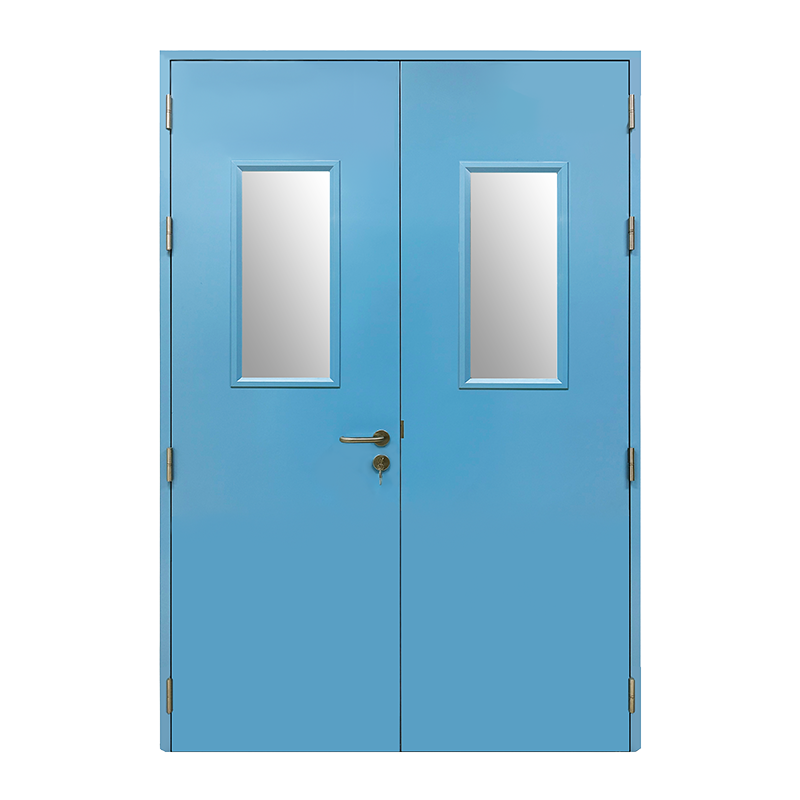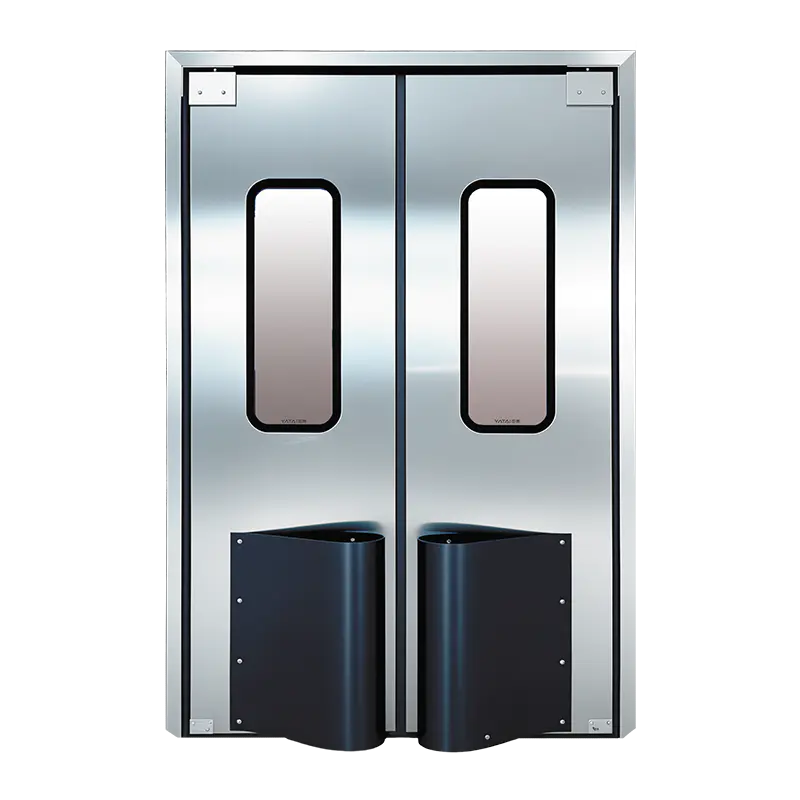How Do Cleanroom Fire-Resistant Doors Prevent Smoke Spread?
Cleanrooms are specialized environments designed to maintain strict levels of cleanliness, controlling particles, contaminants, and airflow. They are widely used in pharmaceutical production, semiconductor manufacturing, biotechnology labs, and other industries where contamination control is critical. However, fire safety in these environments is equally essential, and cleanroom fire-resistant doors play a vital role in protecting both personnel and sensitive equipment. One often overlooked function of these doors is their ability to prevent smoke spread.
Understanding the Role of Fire-Resistant Doors
Fire-resistant doors are engineered to withstand high temperatures and prevent the passage of flames for a specified period, often ranging from 30 minutes to several hours. While containing fire itself is critical, smoke control is equally important. Smoke is a leading cause of injury and fatalities in fires because it reduces visibility, displaces oxygen, and carries toxic gases. Therefore, controlling smoke spread is a key function of fire-resistant doors, especially in cleanrooms where the integrity of the controlled environment must be maintained.
Fire-Resistant Doors vs. Regular Doors
Unlike standard doors, cleanroom fire-resistant doors are constructed with materials and designs that provide both fire protection and smoke control:
- Core materials: They often use mineral cores, steel, or fire-rated composites that can withstand high temperatures without warping or failing.
- Seals and gaskets: Smoke seals, intumescent strips, and compression gaskets prevent smoke from passing through gaps around the door.
- Door frames and hardware: Fire-rated frames, hinges, and closers ensure the door remains closed and effective during a fire.
Together, these elements help prevent smoke from migrating into adjacent areas, preserving safety and maintaining cleanroom integrity.
How Smoke Spreads in Buildings
Before understanding how doors prevent smoke spread, it’s important to know how smoke moves:
- Pressure differences: Smoke moves from areas of higher temperature and pressure to lower pressure zones.
- Airflow patterns: HVAC systems, ventilation ducts, and open doors can carry smoke rapidly.
- Leaks and gaps: Even small gaps around doors, windows, or walls can allow smoke to infiltrate other areas.
Cleanrooms often use positive pressure to keep contaminants out. If smoke enters, it can compromise both safety and the controlled environment. Fire-resistant doors are designed to counteract these pathways.
Mechanisms of Smoke Containment in Cleanroom Fire-Resistant Doors
1. Smoke Seals and Intumescent Strips
A critical component of smoke control in fire-resistant doors is the use of smoke seals. These are typically made of materials that expand under heat (intumescent materials) or remain flexible at room temperature to fill gaps.
- Intumescent strips: These expand when exposed to high temperatures, sealing the gap between the door and the frame to prevent smoke passage.
- Flexible gaskets: Around the edges of the door, these maintain a tight seal even when the door is closed and under pressure differences.
By sealing the edges, these components effectively block smoke migration, buying crucial time for evacuation and fire suppression systems to act.
2. Self-Closing Mechanisms
Cleanroom fire-resistant doors are often equipped with self-closing devices. These ensure that the door remains closed at all times, especially in emergency situations. A door left open during a fire can act as a conduit for smoke, defeating the protective design. Self-closing mechanisms reduce this risk significantly.
3. Airtight Construction
The construction of cleanroom fire-resistant doors is designed to minimize gaps, cracks, and penetrations. Key design features include:
- Flush surfaces: Smooth door surfaces reduce areas where smoke could seep.
- Reinforced frames: Fire-rated frames hold the door securely in place, preventing distortion under heat that could create gaps.
- Sealed hardware penetrations: Locks, hinges, and handles are installed with fire-resistant and smoke-sealing materials to prevent leaks.
4. Compartmentalization
In addition to the door itself, cleanroom design often relies on compartmentalization. Fire-rated doors divide the building into fire compartments, slowing both fire and smoke spread. This controlled approach ensures that even if one area is compromised, smoke does not easily reach critical zones such as pharmaceutical cleanrooms or labs with sensitive experiments.

Testing and Standards for Smoke Control
To ensure effectiveness, cleanroom fire-resistant doors undergo rigorous testing under national and international standards:
- UL 1784: Standard for Air Leakage of Fire Doors, which tests smoke leakage under pressure differentials.
- EN 1634-3: European standard for smoke control door assemblies.
- NFPA 105: Defines requirements for smoke door assemblies, including allowable leakage rates.
These tests ensure that doors not only resist fire but also significantly limit smoke movement under realistic conditions. For example, a high-quality fire-rated door can limit smoke leakage to less than 3 cubic feet per minute per square foot of door surface, even under pressure.
Integration with Cleanroom Systems
Cleanroom fire-resistant doors are part of a broader strategy for contamination and smoke control:
- Positive pressure maintenance: Many cleanrooms are positively pressurized. Smoke entering an adjacent area must overcome this pressure, and a sealed door helps maintain the barrier.
- HVAC coordination: Smoke dampers in HVAC ducts work with fire doors to prevent smoke from being drawn into ventilation systems.
- Alarm integration: Doors may be linked to smoke detectors, triggering automatic closure in case of fire.
Proper integration ensures that smoke control is not just localized to the door but works as part of a systemic safety design.
Benefits of Effective Smoke Control
The advantages of well-designed cleanroom fire-resistant doors go beyond fire protection:
- Human safety: Preventing smoke infiltration reduces inhalation hazards and visibility problems, giving occupants more time to evacuate.
- Equipment protection: Sensitive cleanroom instruments are vulnerable to smoke and soot, which can cause contamination and damage.
- Regulatory compliance: Adhering to smoke containment standards helps meet OSHA, NFPA, and ISO cleanroom regulations.
- Operational continuity: Limiting smoke spread reduces downtime and costly cleaning after fire incidents.
Best Practices in Selecting Smoke-Resistant Cleanroom Doors
When choosing doors, consider these factors:
- Fire rating: Select doors with an appropriate fire resistance duration (30, 60, or 90 minutes) based on building code requirements.
- Smoke rating: Look for doors certified under UL 1784 or EN 1634-3 for low leakage.
- Material compatibility: Ensure that door materials are compatible with cleanroom requirements, including chemical resistance and non-shedding surfaces.
- Maintenance: Regular inspections are critical. Smoke seals, gaskets, and self-closing mechanisms should be checked periodically to ensure they function correctly.
Conclusion
Cleanroom fire-resistant doors are essential not only for fire containment but also for preventing smoke spread. Through airtight construction, intumescent seals, self-closing mechanisms, and compartmentalization, these doors act as a critical barrier between fire hazards and cleanroom environments. By limiting smoke infiltration, they protect human life, preserve sensitive equipment, and maintain the integrity of controlled environments. For industries reliant on sterile or particle-free spaces, investing in high-quality, smoke-rated cleanroom fire-resistant doors is a fundamental part of safety and operational efficiency.


 English
English Español
Español русский
русский عربى
عربى
















